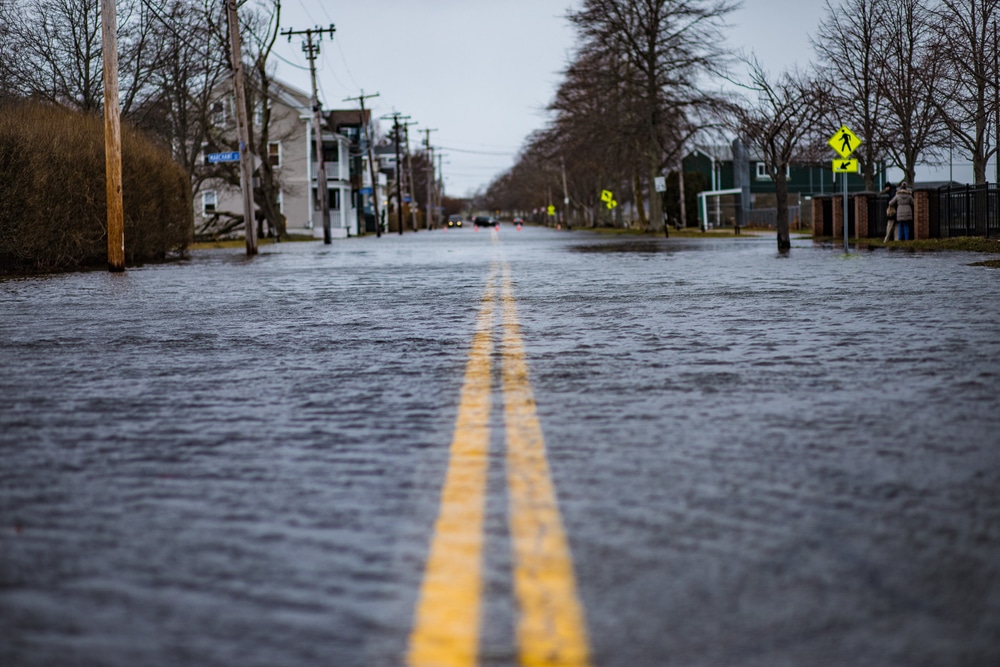Mother nature can be as sweet as apple pie—but it can also be dangerous and even deadly. A flood is a dangerous natural disaster that affects countless communities nationwide. From coast to coast, floods can ravage homes and destroy priceless belongings.
Southern Idaho sees its fair share of rain each year. Do you know what to do in the event of a flood? Keep reading to learn the difference between flood advisories, flood watches, and flood warnings. Plus, we’ll tell you how you can keep your family safe.
Table of Contents
What Is a Flood Advisory?
A flood advisory is like a preliminary message indicating the potential for heavy rainfall. If your area issues a flood advisory, you need to keep your phone or television dialed into your local news outlet for weather updates.
What to Do During a Flood Advisory
During a flood advisory, it’s best to stay tuned into the most recent weather updates. Have a safety plan in place in case the weather decides to take a turn for the worse and you have to evacuate.
What Is a Flood Watch?
A flood watch is a more serious alert indicating that conditions are favorable for a flood. A flood watch doesn’t mean a flood will happen, but it could happen given the right conditions.
What to Do During a Flood Watch
If your area is under a flood watch, then you need to keep a close eye on the local news. Ensure that you’re getting weather updates and have a plan in place should you need to move to higher ground. Think about any belongings you’d want to bring along with you so you don’t have to worry about them last minute.
What Is a Flood Warning?
A flood warning is the most urgent and critical message you can receive. A flood warning is issued when a flood is on the rise. Flood warnings can turn into flash flood warnings, depending on the severity and speed of the storm. If your area has been issued a flash flood warning, move to higher ground immediately.
What to Do During a Flood Warning
Once a flood warning is in effect, you need to move to higher ground. You should already have an emergency plan in place, along with all of the belongings you want to take. Gather your loved ones, take shelter at a higher elevation, and stay up to date on the latest weather reports. Do not walk or drive during a flood warning. Fast-surging water is extremely dangerous.
 Different Types of Floods
Different Types of Floods
You’re probably wondering what separates a flood from a flash flood. There are several types of floods that you should be aware of, as each one can devastate your home.
Flash Flood
Flash floods are characterized by the rapid onset of rainfall. Flash floods move fast, leaving you and your family with little to no time to prepare. That’s why it’s so important to have an emergency plan set in place should a flash flood occur.
River Flood
River floods happen when water overflows the riverbanks. River floods are typically caused by extreme storms and long-lasting rainfall. If you live near a river, be sure to have an emergency plan in place for fast action should you need to reach higher ground.
Coastal Flood
Coastal floods can result from storm surges, high tides, heavy rainfall, and even tsunamis. Although Southern Idaho isn’t at risk for coastal flooding, it’s a flood type to keep in mind should you ever visit an oceanfront destination.
Groundwater Flood
Groundwater flooding transpires when the drainage system becomes overwhelmed. Water will spew out of the drainage systems and into the streets and nearby homes. Groundwater floods tend to occur for weeks, jeopardizing the structure of your property.
Sewage Flood
Sewage floods are as dangerous as any other flood, plus they’re contaminated with harmful pollutants. These floods are extremely hazardous and can permeate your home through toilets, sinks, and even showers.
Get 24/7 Emergency Flood Damage Repair With CTR
Flood damage can leave your property in shambles. If your home has just experienced a flood, contact the experts at Cleanup & Total Restoration. Our team is experienced in flood damage repair and restoration throughout the Southern Idaho region. Get your home back to being home again by contacting us for immediate services.



 Different Types of Floods
Different Types of Floods




